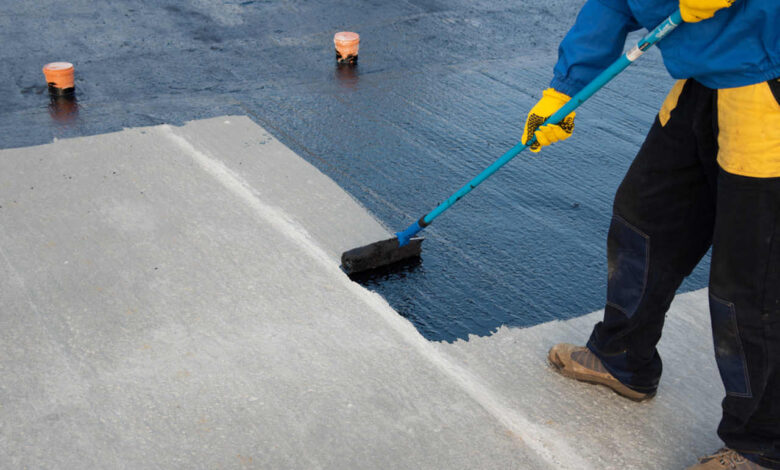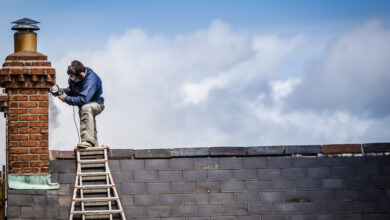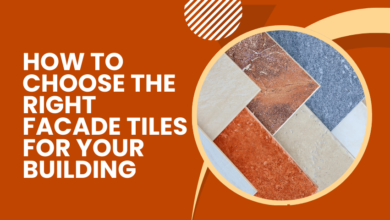A Deep Dive into Waterproofing, Heatproofing, and Leakage Solutions

Homes are our sanctuaries, a place where we seek comfort, safety, and peace of mind. However, ensuring that a house remains a secure and comfortable environment involves addressing various challenges, particularly those posed by water and temperature extremes. This guide explores essential strategies for protecting homes through effective waterproofing, heatproofing, and leakage management. By understanding these methods, homeowners can take proactive steps to safeguard their investments and maintain a healthy living environment.
Waterproofing: The First Line of Defense Against Water Damage
1. Understanding the Importance of Waterproofing
Water is a powerful force that can cause significant damage to buildings if not properly managed. Waterproofing is the process of making a structure resistant to water ingress, which is crucial for preventing structural damage, mold growth, and other related issues.
- Prevents Structural Deterioration: Water infiltration can weaken concrete, erode foundations, and cause wood to rot, leading to expensive repairs and compromised structural integrity.
- Avoids Health Hazards: Moist environments are a breeding ground for mold and mildew, which can cause respiratory issues and other health problems.
2. Types of Waterproofing Techniques
There are several methods of waterproofing, each suited to different areas and types of buildings:
- Liquid Membrane Waterproofing: This involves applying a liquid coating that cures into a flexible, waterproof membrane. It’s commonly used on roofs and balconies due to its adaptability and ease of application.
- Cementitious Waterproofing: A durable method using a cement-based mixture, often applied to water tanks, basements, and swimming pools. This method is popular due to its simplicity and effectiveness.
- Bituminous Coating: Also known as asphalt coating, this provides a protective barrier that is particularly effective for foundations and underground structures.
- Polyurethane Liquid Membrane: Ideal for flat roofs, this method involves applying a polyurethane coating that forms a highly elastic and waterproof barrier.
3. Key Areas to Waterproof in a Home
- Basements: To prevent groundwater from seeping in, which can cause flooding and damage.
- Roofs and Terraces: To protect against rainwater penetration, which can lead to leaks and structural issues.
- Bathrooms and Kitchens: Areas prone to water usage and spills that can lead to mold growth and water damage if not properly sealed.
4. Benefits of Waterproofing
- Long-Term Cost Savings: Investing in waterproofing helps avoid costly repairs by preventing water damage from occurring in the first place.
- Improved Property Value: Homes that are well-protected against water damage have higher market values and are more appealing to buyers.
- Enhanced Comfort and Safety: Waterproofing ensures a dry, mold-free living environment, contributing to overall health and comfort.
Heatproofing: Keeping Your Home Cool and Energy Efficient
1. The Need for Heatproofing
Heatproofing, or thermal insulation, involves reducing the amount of heat that enters or escapes a building. This is particularly important in regions with high temperatures or significant temperature variations, as it helps maintain a comfortable indoor climate and reduces energy consumption.
- Reduces Energy Costs: By minimizing heat transfer, heatproofing lowers the need for air conditioning and heating, leading to significant energy savings.
- Enhances Indoor Comfort: Proper insulation keeps homes cooler in the summer and warmer in the winter, ensuring year-round comfort.
2. Methods of Heatproofing
There are various techniques and materials used for heatproofing homes:
- Reflective Roof Coatings: These coatings reflect sunlight and prevent heat absorption, making them ideal for roofs in hot climates. They help in reducing indoor temperatures and improving energy efficiency.
- Insulating Paints: These are specially formulated paints that provide a thermal barrier when applied to exterior walls and roofs, reducing heat transfer.
- Thermal Insulation Boards: These boards are installed on walls and roofs to provide effective insulation against heat. They are often used in combination with other insulation methods for enhanced effectiveness.
3. Key Areas to Heatproof in a Home
- Roofs: The roof is a major entry point for heat, so insulating it can significantly reduce indoor temperatures and improve comfort.
- Walls: Insulating exterior walls helps in maintaining a consistent indoor temperature by reducing heat transfer from outside.
- Windows and Doors: Installing insulated windows and doors can prevent heat from entering and reduce the need for air conditioning.
4. Benefits of Heatproofing
- Energy Efficiency: By reducing the need for heating and cooling, heatproofing helps in lowering energy bills and reducing the carbon footprint of a home.
- Increased Comfort: Proper insulation ensures a more consistent and comfortable indoor climate, enhancing the quality of life for occupants.
- Extended Lifespan of HVAC Systems: Reduced reliance on heating and cooling systems means less wear and tear, prolonging their operational life and reducing maintenance costs.
Leakage Solutions: Addressing Common Causes of Water Damage
1. Understanding Water Leakage Issues
Water leakage can cause significant damage to a home, including structural weakening, mold growth, and damage to personal belongings. It’s crucial to address leaks promptly to prevent further complications.
- Common Causes: Leaks can occur due to poor construction, aging materials, faulty plumbing, or extreme weather conditions.
- Impact on Health and Safety: Besides structural damage, leaks can lead to mold growth and other health hazards.
2. Types of Leakage Solutions
Various techniques can be used to address water leakage, depending on the source and severity of the issue:
- Sealants and Caulks: Applying sealants to cracks and gaps can effectively prevent water from entering. This is a common and cost-effective solution for minor leaks.
- Plumbing Repairs: Fixing faulty pipes and fittings is crucial in preventing leaks. Regular maintenance and inspections can help in identifying potential issues before they become major problems.
- Waterproof Membranes: Installing waterproof membranes in areas prone to leaks, such as basements and bathrooms, can provide a long-term solution.
- Drainage Improvements: Ensuring proper drainage around the building helps in preventing water accumulation and seepage. This includes installing gutters, downspouts, and drainage systems to direct water away from the foundation.
3. Key Areas Prone to Leakage
- Bathrooms and Kitchens: Frequent water usage in these areas makes them susceptible to leaks. Ensuring proper sealing and maintenance is essential to prevent water damage.
- Roofs and Attics: Roof leaks are common, especially in older homes. Regular inspections and timely repairs can help in preventing water from seeping into the attic and causing damage.
- Basements: Groundwater seepage can lead to basement leaks, often due to inadequate waterproofing. Addressing these issues early on can prevent more serious damage.
4. Benefits of Effective Leakage Solutions
- Protection Against Structural Damage: Promptly addressing leaks prevents water from weakening building materials and causing long-term damage.
- Health and Safety: By preventing mold and mildew growth, effective leakage solutions contribute to a healthier living environment.
- Cost Savings: Repairing leaks early on can save significant costs associated with water damage repairs and potential health issues.
Roofing Solutions: Understanding ACC and GI Roof Sheets
1. Introduction to ACC and GI Roof Sheets
When it comes to roofing, choosing the right materials is crucial for protecting your home against weather elements and ensuring long-term durability. ACC (Asbestos Cement Corrugated) and GI (Galvanized Iron) roof sheets are popular choices due to their unique properties.
- ACC Roof Sheets: Known for their durability and fire resistance, ACC roof sheets are made from asbestos fibers and cement. They offer excellent protection against weather elements and are particularly effective in areas prone to high winds and heavy rains.
- GI Roof Sheets: Made from galvanized iron, GI roof sheets are coated with a layer of zinc to prevent corrosion. They are lightweight, durable, and provide excellent protection against the elements, making them ideal for a variety of roofing applications.
2. Benefits of ACC and GI Roof Sheets
- Durability: Both ACC and GI roof sheets offer long-lasting protection against the elements, reducing the need for frequent repairs and replacements.
- Cost-Effectiveness: These roofing materials are affordable and provide excellent value for money, making them a popular choice for homeowners and builders alike.
- Low Maintenance: ACC and GI roof sheets require minimal maintenance, which helps in reducing long-term upkeep costs.
3. Applications of ACC and GI Roof Sheets
- Residential Buildings: These roof sheets provide reliable protection for homes against weather elements, ensuring a safe and comfortable living environment.
- Commercial Buildings: ACC and GI roof sheets are suitable for warehouses, factories, and other commercial structures due to their durability and weather resistance.
- Agricultural Structures: Ideal for barns, sheds, and other agricultural buildings, these roof sheets offer excellent protection against the elements, ensuring the safety and security of livestock and equipment.
4. Choosing the Right Roofing Solution
When selecting roofing materials, consider factors such as climate, budget, and the specific requirements of your building. Consulting with roofing experts can help in making an informed decision and ensuring the longevity and effectiveness of your roofing solution.
Conclusion
Maintaining the integrity and comfort of your home involves proactive measures to protect against water damage, excessive heat, and leaks. By understanding and implementing effective waterproofing, heatproofing, and leakage solutions, homeowners can ensure that their homes remain safe, comfortable, and energy-efficient. These strategies not only safeguard your property but also contribute to a healthier and more sustainable living environment. Investing in these essential maintenance practices.
Zeko Service offers comprehensive solutions for all your waterproofing, heatproofing, and leakage needs, ensuring your home remains safe, comfortable, and protected.



